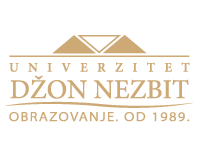I investigated just how laypeople rest in life by the exploring the frequency away from lays, type of lies, receivers and you may mediums away from deception in the last 1 day. 61 lays over the last 1 day (SD = 2.75; range: 0–20 lies), nevertheless the shipping try non-generally speaking marketed, having an effective skewness off step 3.90 (SE = 0.18) and you can an effective kurtosis out of (SE = 0.35). New half dozen most respected liars, less than step 1% of our own people, taken into account 38.5% of your lies advised. Thirty-9 per cent of one’s players reported advising zero lays. Fig step 1 screens participants’ lay-telling prevalence.
Participants’ endorsement of the type of, receiver, and typical of its lays are provided from inside the Fig dos. Players primarily stated informing light lies, to relatives, and via face-to-deal with affairs. All rest functions demonstrated low-normal distributions (understand the Help Suggestions towards the complete breakdown).
Error bars depict 95% trust intervals. For deceit users, “other” refers to anybody particularly sexual people otherwise complete strangers; for adventist singles inloggen deceit sources, “other” describes on the internet platforms maybe not included in the provided listing.
Lay incidence and you can properties since the a purpose of deceit ability.
Next, we conducted correlational analyses to examine the association of our participants’ lie frequency and characteristics with their self-reported deception ability. An increase in self-reported ability to deceive was positively correlated to a greater frequency of lies told per day, r(192) = .22, p = .002, and with higher endorsement of telling white lies and exaggerations within the last 24 hours (r(192) = .16, p = .023 and r(192) = .16, p = .027, respectively). There were no significant associations between self-reported deception ability and reported use of embedded lies, r(192) = .14, p = .051; lies of omission, r(192) = .10, p = .171; or lies of commission, r(192) = .10, p = .161. Higher self-reported deception ability was significantly associated with telling lies to colleagues, r(192) = .27, p < .001, friends, r(192) = .16, p = .026, and “other” receivers of deception, r(192) = .16, p = .031; however, there were no significant associations between self-reported ability to lie and telling lies to family, employers, or authority figures (r(192) = .08, p = .243; r(192) = .04, p = .558; and r(192) = .11, p = .133, respectively). Finally, higher values for self-reported deception ability were positively correlated to telling lies via face-to-face interactions, r(192) = .26, p < .001. All other mediums of communicating the deception were not associated with a higher reported ability, as follows: Via phone conversations, text messaging, social media, email, or “other” sources (r(192) = .13, p = .075; r(192) = .13, p = .083; r(192) = .03, p = .664; r(192) = .05, p = .484; r(192) = .10, p = .153, respectively).
Deception steps of great liars
We had been including selecting exploring the methods from deceit, such as for example the ones from a liars. To evaluate that it, we authored classes representing participants’ care about-reported deceit feature, due to their scores throughout the matter asking regarding their capacity to hack properly, as follows: Countless about three and less than was shared with the category of “Terrible liars” (letter = 51); scores of 4, 5, six, and 7 was in fact shared to the sounding “Simple liars” (letter = 75); and scores of eight and you may above was indeed mutual on group away from “Good liars” (n = 68).
Table 1 provides an overview of the exact values regarding the endorsement of each deception strategy that emerged from the qualitative coding. To examine whether there were associations between the reported strategies and varying deception abilities, we conducted a series of chi square tests of independence on participants’ coded responses to the question regarding their general strategies for deceiving. We did not observe any statistically significant associations between self-reported deception ability and the endorsement of any strategy categories (see Table 1), apart from one exception. We observed a significant association between Poor, Neutral and Good liars and the endorsement of using “No strategy”. Pairwise comparisons were performed using Dunn’s procedure with a corrected alpha level of .025 for multiple tests. This analysis revealed a significant difference in endorsing “No strategy” only between the Good and Poor liars, p = .004. However, we did not meet the assumption of all expected cell frequencies being equal to or greater than five and as such these data may be skewed. Based on Cohen’s guidelines , all associations were small to moderate (all Cramer’s Vs < .206).

